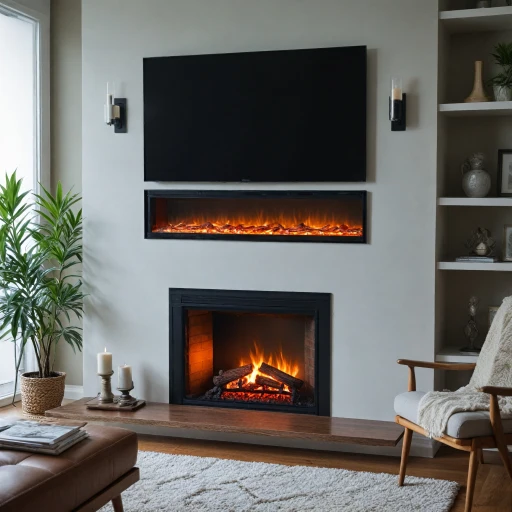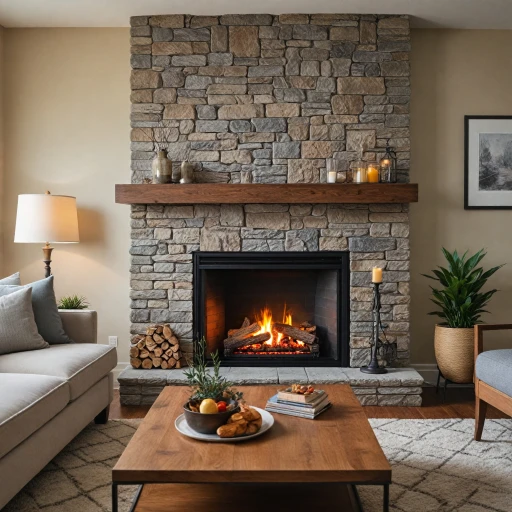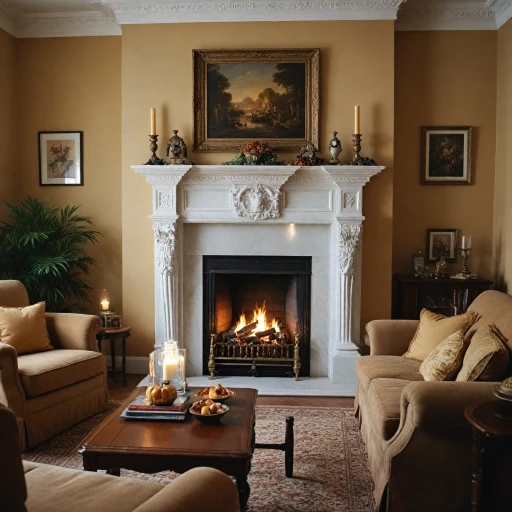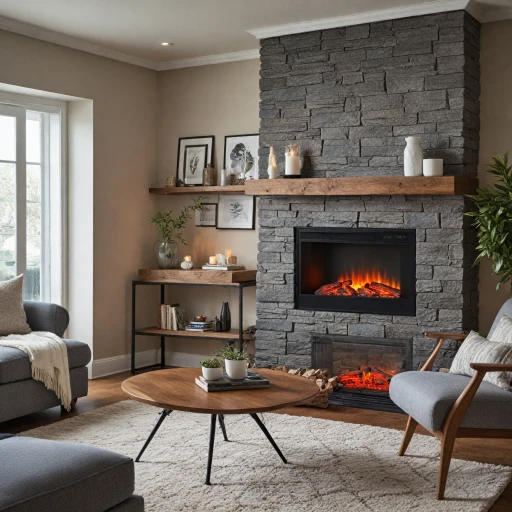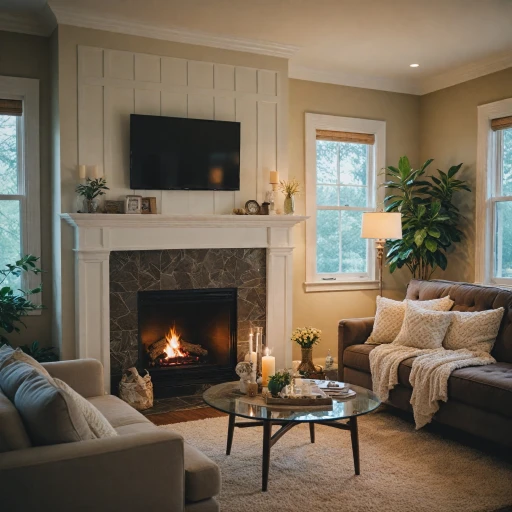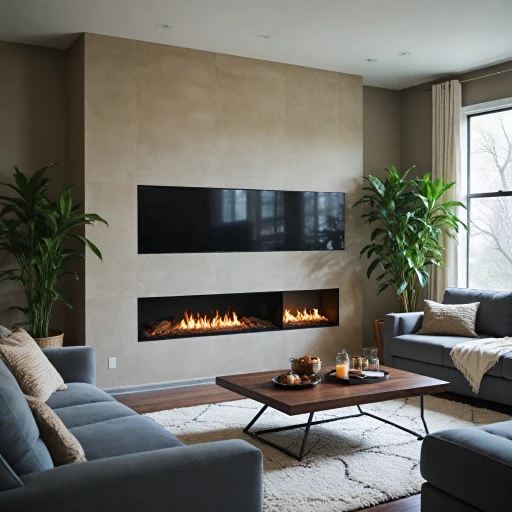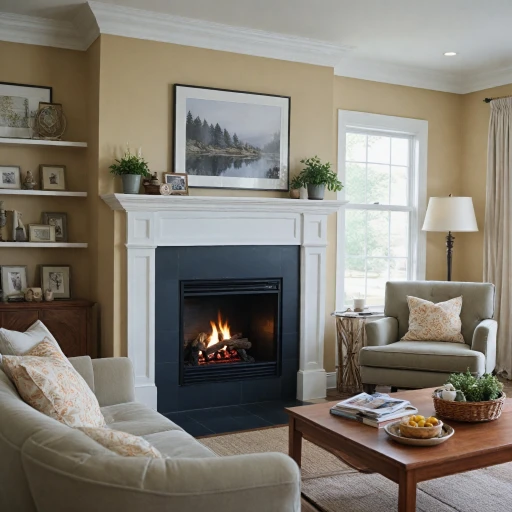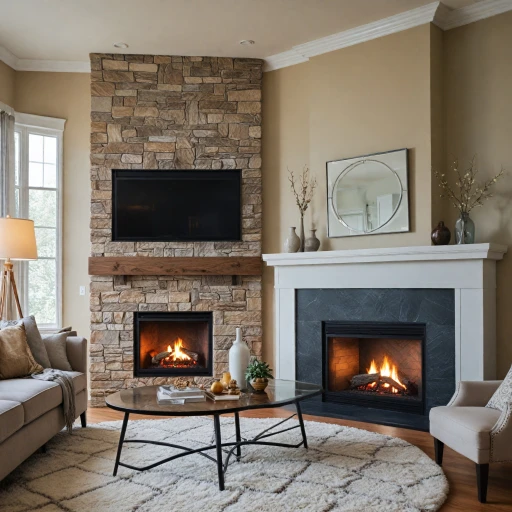
Understanding the Basics: Gas vs. Electric Fireplaces
Traditional Meets Modern: Gas and Electric Fireplaces
In today's world of warmth and coziness, both gas and electric fireplaces have their own star roles to play, offering unique advantages. If you're starting to ponder which might be the right fit for you, understanding the basics can help you get a better view of what each has to offer. It's like choosing between two kinds of fireside companions for your living space.
The traditional charm of gas fireplaces often brings with it the comforting feel of a real flame. These are more in line with what you'd expect from a classic wood-burning experience, minus the chopping of logs and cleaning ash. The option to go with a vent-free or direct vent gas fireplace allows you to enjoy the heat without too much fuss over chimney or exhaust installations.
On the other hand, if mess-free warmth is your top priority, electric fireplaces might just light up your interest. These modern marvels work their magic with electricity, giving off heat without needing any direct burning. They are cost-effective when considering installation and offer flexibility in placement – no chimney or vents required.
Gas or electric, the choice largely depends on personal preference, particular needs, and the style of your home. Whether you're lured by the crackle of a gas flame or the sleek aesthetics of electric fireplaces, each has numerous options to fit your lifestyle.
Cost Considerations: Installation and Maintenance
Budgeting the Flames: Expenses Worth Considering
When you're deciding between a gas fireplace and an electric fireplace, it's more than just choosing how you want to enjoy the glow of a fire. Consider the immediate and long-term costs. Starting with the wallet, it's essential to know what you're signing up for.
Firstly, let's talk about installation costs. A gas fireplace demands a bit more upfront investment. If you need a direct vent or a ventless gas system, remember that these rely on your home's existing chimney or require installing new vents. An electric fireplace, on the other hand, usually skips the chimney and elaborate setup, making it a preferred choice for budget-conscious homeowners. They're often vent free and can be easily installed with minor adjustments.
Next up, consider ongoing maintenance costs. With a gas electric setup, you're looking at regular check-ups for the gas lines, which can add up over time. Compare this with electric fireplaces, which require minimal maintenance. They don't rely on vent cleaning or fuel line inspections, offering a hassle-free experience with fewer long-term costs.
But, what about the burning costs? Gas fireplaces run on gas or propane, which can be more costly when energy prices go up. In contrast, using fireplace electric options can be more energy-efficient and lead to lower utility bills. This often attracts individuals aiming to save money over the long term.
While each option presents its own price challenges and opportunities, aligning these with your financial plans and preferences is key. Whether it’s a traditional burning fireplace or more modern electric fireplaces, understanding these costs will help illuminate your decision.
Curious about whether an electric option might be the perfect match for your needs and style? Embracing the warmth of a modern electric fireplace could be your next move.
Energy Efficiency and Environmental Impact
Efficiency and Environmental Impact of Gas vs. Electric Fireplaces
When considering a fireplace, energy efficiency and environmental friendliness are key factors. If you're eyeing electric fireplaces, you'll be pleased to know they offer impressive efficiency ratings. Transforming almost all the electricity they use into heat, electric fireplaces shun the need for a chimney or vent, unlike their gas counterparts that might need a vent or an actual chimney for safe operation.
Gas fireplaces, on the other hand, while being more efficient than traditional wood-burning versions, still lose some heat through vents or chimneys. A direct vent gas fireplace is more efficient than a vent-free option, capturing more heat to warm up your living space.
- Green Choice: Electric fireplaces provide a greener alternative due to their renewable energy potential and lack of emissions.
- Running Costs: With fluctuating gas prices, electricity tends to provide more stable operational costs, although both options are ultimately cheaper than wood-burning models.
- Heat Where You Need It: Electric fireplaces utilize heating strips that let you control the heat output with precision, ensuring only the areas in use are heated efficiently.
Ultimately, the choice between gas and electric might come down to your view on sustainability and impulse for efficient heating. Each offers distinct advantages and challenges that cater to varying preferences and lifestyle needs.
Safety Features and Concerns
Prioritizing Protection and Peace of Mind
When choosing between a gas or electric fireplace, safety is a pivotal concern for many homeowners. Each type has unique attributes and considerations that can impact your peace of mind. Gas Fireplaces: Vent & Safety Aspects- Vent Options: Gas fireplaces commonly come in two main types: direct vent and ventless gas. Direct vent models use two vents: one for pulling in outdoor air for combustion and another for expelling fumes and exhaust, keeping your indoor air quality intact. Ventless gas fireplaces, on the other hand, do not require a vent or chimney, which can simplify installation. However, they do release combustion byproducts directly into your home, necessitating careful placement and consideration of room ventilation.
- Safety Features: Innovations in gas fireplaces include built-in oxygen depletion sensors (ODS) that shut down the system if oxygen levels drop too low, protecting you from potential hazards. Also, ensure regular maintenance to check for leaks or blockages which could pose risks over time.
- Plug & Play Simplicity: As simple as plugging into an outlet, electric fireplaces offer an inherently safe option with none of the combustion risks associated with gas or wood-burning models. Because there's no real flame, concerns about accidental burns are virtually eliminated, especially beneficial if you have curious children or pets.
- Temperature Management: Many electric fireplace models feature automatic shut-off settings to prevent overheating, acting as a built-in safeguard to keep your home worry-free. This protection allows you to enjoy the ambiance without continuously monitoring your unit.
- With any type of fireplace, always use a screen to keep a safe distance between the heat source and flammable materials, including decorations or furniture.
- Keep a working smoke detector and a fire extinguisher on hand to enhance safety measures.
- Regular maintenance checks by a qualified professional ensure fireplaces' safe operation over their lifespan.
Aesthetic and Design Options
Enhancing Your Living Space with Visually-Striking Options
Selecting the right fireplace for your home isn't just about warmth; it's also about visual appeal and enhancing your living environment. Both gas and electric fireplaces offer diverse styles and design choices, allowing homeowners to tailor their surroundings as they see fit. For those leaning towards a gas fireplace, know that it offers a classic, traditional charm. Whether you're dreaming of a rustic, wood-burning appearance or a sleek, modern drt direct feel, the aesthetic possibilities seem limitless. Gas units often integrate seamlessly with a vent or chimney, channeling that timeless ambiance many homeowners adore. However, transitioning to electric fireplaces introduces an array of customization options that might catch your fancy. From the start, they’re a ventless gas free alternative, opening up numerous installation opportunities, even in spaces where adding a chimney would be infeasible. Electric fireplaces provide a wide view, often more than their gas counterparts, thanks to adjustable screens or realistic displays replicating direct fire aesthetics.Artistry Without the Mess
Electric models are prized for their versatility and ease of use. With options to select your desired flame color, brightness, and even speed, you set the mood to your exact tastes. Think of those charming evenings beside a fireplace electric that matches your energy without the hassle of wood or ash cleanup. This contributes to a stress-free ambiance at home, ideal for those seeking to unwind.Outdoor Explorations and Indoor Luxuries
If you're considering an outdoor solution, gas fireplaces fit beautifully into open-air settings, resembling the feel of traditional wood burning but with the benefits of vent-free technology. Just remember, going outdoor calls for careful considerations about weather conditions and your home’s structural capabilities. In sum, weighing the design options places an emphasis on personal flair and utility. Whether you're captivated by the striking visuals of a vent gas mechanism or the versatility promises of an electric incarnation, your home will look and feel inviting.User Experience: Heat Output and Ambiance
Feel the Warmth: A Cozy Experience
When it comes to creating that welcoming ambiance in your home, both gas and electric fireplaces offer unique experiences. Starting with heat output, gas fireplaces are known for their powerful direct heat capabilities. While they efficiently warm up the space around them, they often require a vent or even a chimney for their operation. In contrast, electric fireplaces, such as vent-free models, are celebrated for their easy installation and the freedom to place them nearly anywhere indoors.
Both options bring warmth and comfort, yet the way they deliver that experience can differ significantly. For example, if you're envisioning a crackling wood burning fire, gas fireplaces mimic this effect very well. However, electric fireplaces might offer a broader view range with their 3D flame technologies and customization options. Imagine, you can change flame colors to match your mood without the worry of extra installation fees or maintenance work.
The Glimmering Glow: Setting the Scene
Creating the perfect environment goes beyond warmth. Electric fireplaces, with their wide range of design options, allow you to fit almost any aesthetic. They offer flexibility with installation points, including outdoor settings, without the need for specific venting. From sleek modern to traditional styles, there's bound to be an option that complements your decor.
Gas fireplaces also provide custom aesthetic touches with options for vent gas and ventless gas versions, but bear in mind they often involve more permanent installation choices. Having a direct vent option with a gas fireplace can channel the spontaneous charm of a classic burning fireplace with real flames lightly dancing, instilling an air of nostalgia and authenticity.
Final Flames: Your Choice
At the end of the day, the best choice hinges on your preference for either maintaining a traditional fire experience with a gas or going for electric simplicity and modernity. Some might cherish the warmth of a real flame and are keen to overlook possible higher price points, while others delight in the customizable and energy-efficient nature of an electric fireplace. Consider what matters most in your lifestyle when making your purchase decision.

